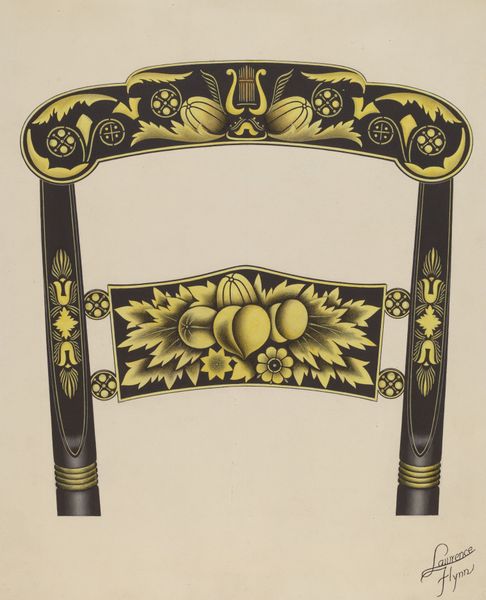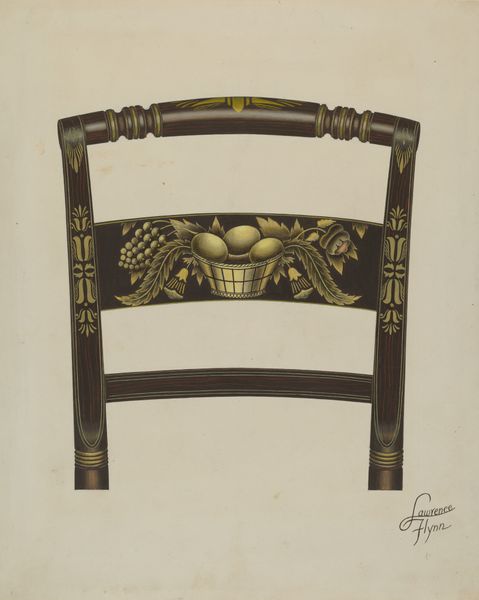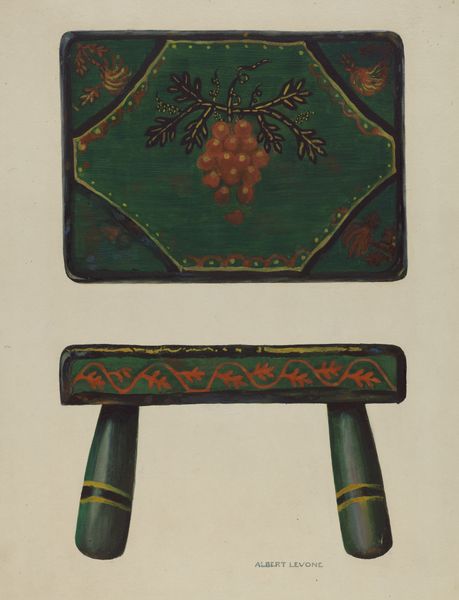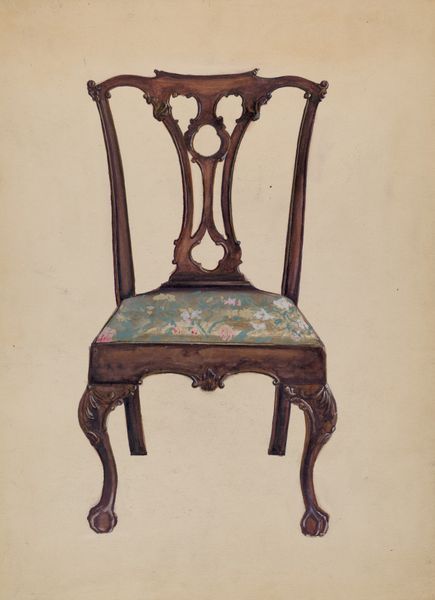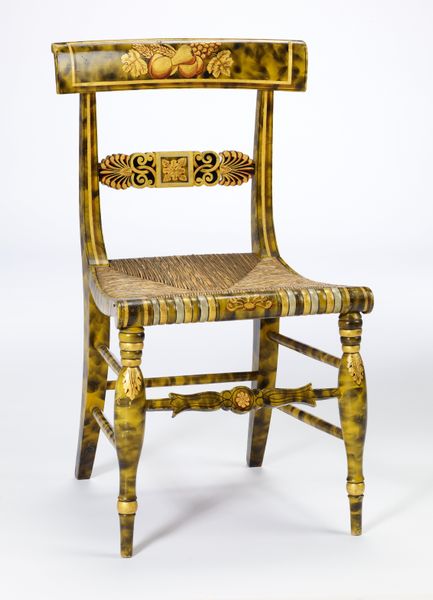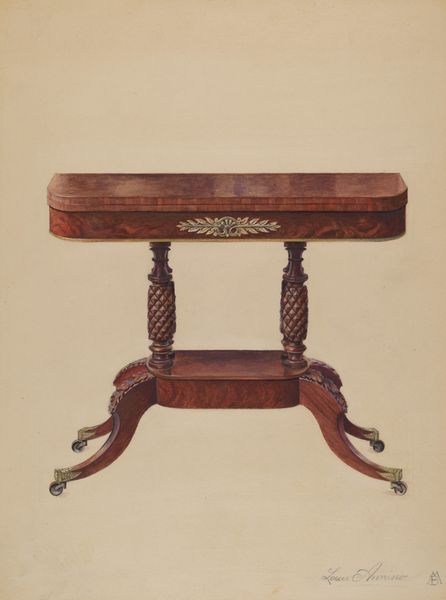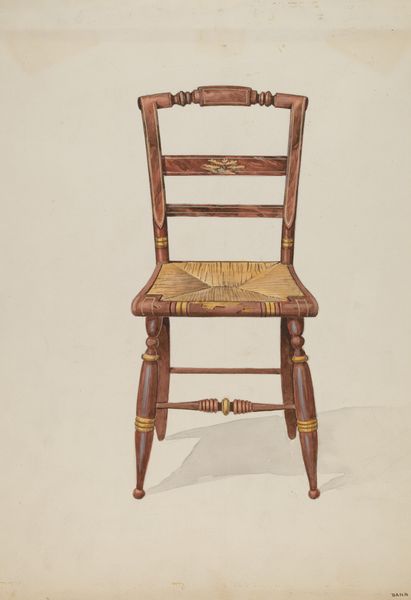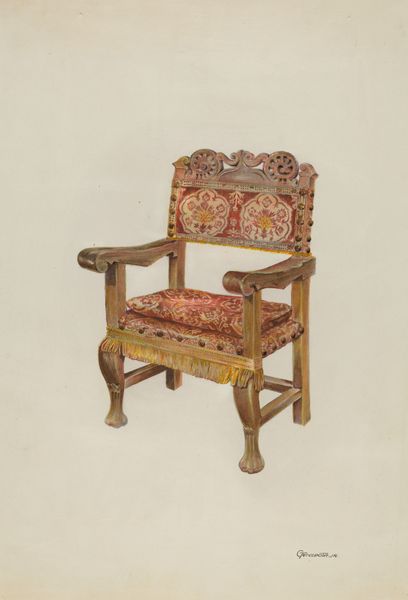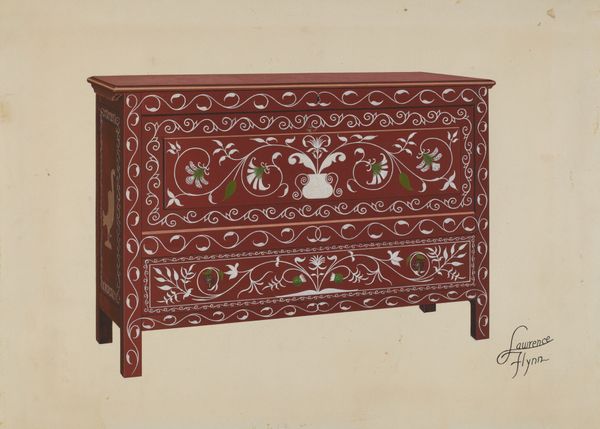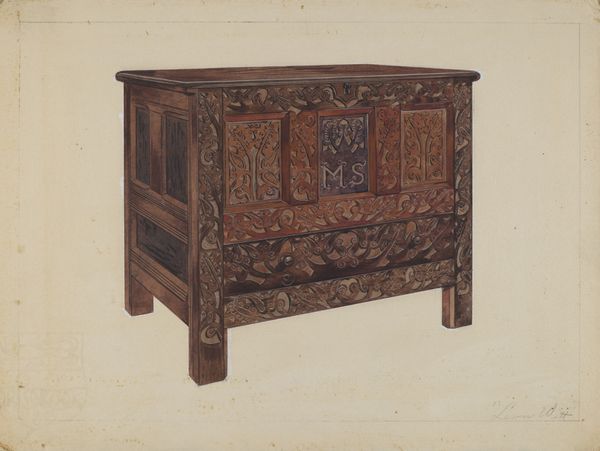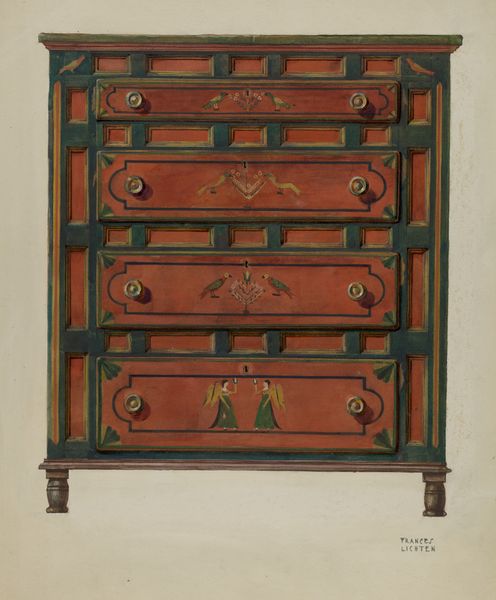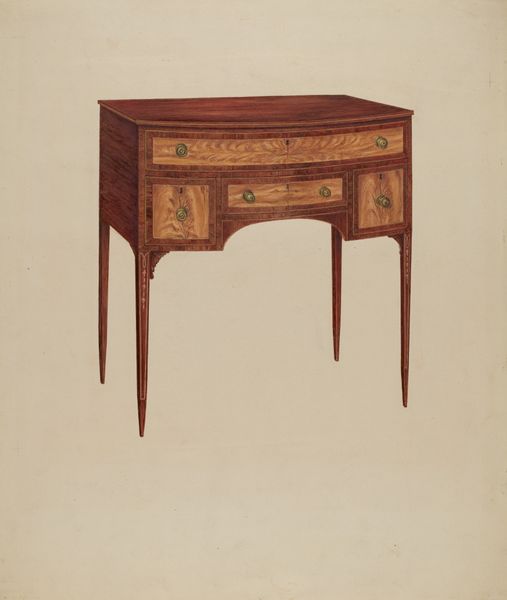
drawing, paper, watercolor
#
drawing
#
paper
#
watercolor
#
ceramic
#
academic-art
#
decorative-art
#
watercolor
Dimensions: overall: 35.5 x 27.9 cm (14 x 11 in.) Original IAD Object: 14"wide; 17"high
Copyright: National Gallery of Art: CC0 1.0
Curator: My eye is immediately drawn to the bright, spring-like quality of the piece, so cheerful. Editor: Let’s take a closer look at this vibrant rendering. What we’re seeing is "Back of Stencilled Chair," a watercolor and ink drawing on paper completed in 1938 by Lawrence Flynn. Curator: It really does feel like a design blueprint or maybe a mock-up for mass production. Is this how things were envisioned? Editor: It absolutely speaks to a burgeoning culture of designed objects infiltrating domestic spaces. Consider that the work on paper is rendered with such precision— it feels as much like an architectural study as it does a humble sketch. Curator: What’s particularly striking is how Flynn treats this functional piece. I see the craft as integral to our understanding of art’s value. Editor: I agree, and viewing it in its own historical context emphasizes how cultural institutions classify art and subsequently ascribe value, even when considering ordinary, quotidian subjects. Curator: Exactly! Because really, what defines the distinction between high art and craft in a consumer driven society? Editor: The tension between practicality and artistry comes into sharp relief here, and it reminds us how ideas of what art is have been challenged and renegotiated across time and cultures. The execution clearly denotes functional art as domestic design. Curator: The piece is quite striking and underscores how material culture can, in fact, embody deeply rooted social structures and beliefs. The colors of the green of nature contrasted with more industrial-leaning yellows creates a mood of optimism for the coming consumer age. Editor: I think it's insightful that you notice this optimistic undertone—I think focusing on this object reveals as much about the artist and era in which this was conceived as the decorated furniture of the era itself. Curator: Well said! It causes you to examine not only art history and art-making, but consumer-making, too. Editor: Indeed, viewing art within a more holistic historical framework, with material production factored in, allows a far more comprehensive appreciation of the role of both the artist and consumer.
Comments
No comments
Be the first to comment and join the conversation on the ultimate creative platform.
